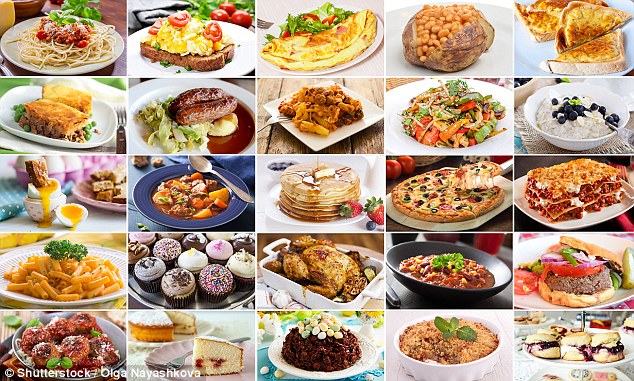What Meals Should Children Know How to Cook by Age 11?
This article appeared recently in the Daily Mail newspaper in Britain- parents had been asked to vote for their meal suggestions and the top 25 meals were listed. Click here for the original list.At The Clever Kitchen we were sad to see so many ‘old’ favourites’- introducing children to the unhealthy habits and foods their parents are used to, and ignoring all the health messages over recent years about returning to eating more vegetables and fruits, eating more whole foods, cutting down on meat and dairy consumption, and limiting unhealthy fats and sugars.So we came up with our own list:Meals to Keep from the Original List:
Scrambled egg. Always make sure you buy organic – not just for the chicken’s sake, but because organic eggs are much higher in omega 3s and other important nutrients like zinc and selenium.
Omelette. Again, always use organic eggs. An omelette is a great source of protein for growing bodies. Adding veggies like spring onions, tomatoes and even potatoes increases the antioxidant content and makes it into a complete meal.
Jacket potato with beans. Always leave the skin on the potato for added fibre and nutrients. The protein from the beans makes it a balanced meal that keeps kids going strong for hours.
Stir fry. A great way to get the kids to eat lots of veggies! Stir frying food quickly helps food retain the maximum amount of nutrients. Add cubed tofu for extra protein.
Pancakes. Experiment with a mix of alternative flours such as buckwheat, cornmeal and rice flour – even add mashed banana. Serve with fresh fruit.
Porridge. Oats are exceptionally good for keeping growing bodies feeling fuller longer. Add alternative milks such as oat, rice and almond and sweeten with maple syrup. Top with fresh fruit.
Apple crumble. Another great way to get the kids to eat oats and fruit. Coconut sugar is a healthier way to sweeten the deal.
Meals we’d definitely say no to, except on an occasional basis:
Cheese on toast. Protein and saturated fat from the melted cheese combined with starchy white bread make for a heavy and hard to digest meal. Opt for whole wheat toast at least.
Sausage and mash. Sausages are high in saturated fats and nitrates – chemical additives. Mash potatoes are lacking in nutrients, and butter adds more saturated fat – leave skins on or opt for a jacket potato instead.
Spaghetti bolognese/Pasta bake/ Pizza from scratch/ Lasagne/ Macaroni Cheese. Eat sparingly as white pasta and pizza dough are lacking in nutrients and cheese and meat (often industrial) are loaded with saturated fats and often contain added chemicals and hormones.
Chilli/ beef burgers/ meatballs. Beware of industrial meat – full of fat and toxins.
Victoria sponge/ fairy cakes/ rice crispy cakes. No nutrients, full of fat, sugar and calories – and bad for teeth!
Meals we’d add in:
Burritos/wraps with veggie filling. Great way to add different vegetables including beans for protein and fibre.
Risotto with veggie additions. You can also add in lentils for additional protein. Great way to get kids into seasonal veggies. Use nutritional yeast instead of cheese.
Veggie chilli. A family favourite – load with fibre, protein and veggies. Have with rice for a complete nutritional meal. Add soy protein flakes to make it more like ‘meat’.
Avocado on toast. Perfectly balanced snack or light meal. Protein, complex carbs, healthy fats and plenty of nutrients and antioxidants.
Fish occasionally. Try to always make sure you buy organic and sustainable. Introduce sardines and mackerel if you haven’t already. Don’t eat tuna more than once a week.
Bruschetta with tomato sauce, and pasta with tomato sauce–no cheese. Add good quality olive oil for more antioxidants and to keep them feeling fuller longer.
Veggie burger. These differ enormously in quality if you buy from a shop. Read the ingredients list and avoid soy products. Learn to make your own favourite bean burger recipe from scratch instead.
Granola. A great way to get the kids to eat a nutritious, balanced breakfast. Add yogurt, fresh fruit and serve with alternative milks if you wish. Provides all the nutrients needed for a full morning of activity and concentration.
Flapjacks. Another great way to eat oats!
Brownies. Can be super healthy if you make them the TCK way adding nuts, raw chocolate (cacao powder) and alternative, whole grain flours.
Hummus and veggie dippers. The perfect after school snack. Plant protein, healthy fats and complex carbs with fibre rich, antioxidant loaded veggies. Have ready in the fridge!
Salads using quinoa. Are more satisfying and interesting for kids than regular green leafy salads. You can add all kinds of things, from sprouts to seeds to raisins. Experiment!
Fresh fruit salad. Always a classic. Use seasonal fruits and don’t rely too heavily on bananas, which are very sweet.
Baked fruits. Are a delicious and highly digestible way to eat fruit. Try baking apples in the oven with a little maple syrup and cinnamon. Yum!
Fruit ice lollies / ice cream (non-dairy). A low sugar alternative to the usual fat laden, sugary ice creams. A perfect summer treat!


No Comment